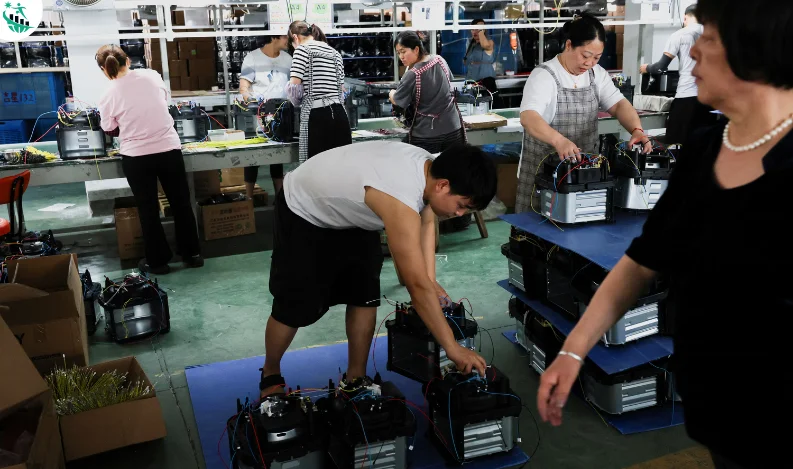
China’s Manufacturing Activity Shrinks Sharply in May as Tariffs and Weak Demand Weigh Heavily
China’s manufacturing sector showed unexpected weakness in May, posting its steepest decline in nearly three years, as escalating U.S. tariffs and faltering global demand weighed heavily on industrial output and business sentiment.
According to the latest Caixin/S&P Global Purchasing Managers’ Index (PMI) released on Tuesday, manufacturing activity contracted to 48.3, falling below the 50-mark that separates growth from contraction and marking the fastest decline since September 2022. The figure also sharply missed economists’ expectations of 50.6, and was down from 50.4 in April.
The survey showed that export orders dropped significantly, reflecting pressure from recently imposed U.S. tariffs and broader global trade uncertainty. The new export orders gauge hit its lowest level since July 2023, while total new orders contracted for the first time in eight months.
China’s official PMI, released over the weekend, also indicated contraction for the second consecutive month, rising slightly to 49.5 in May from 49 in April, signaling only marginal stabilization. The official data, compiled from a broader sample of 3,000 companies, showed ongoing strain in industrial activity across the country.
“Uncertainty in the external trade environment has increased, adding to domestic economic headwinds,” said Wang Zhe, senior economist at Caixin Insight Group. “Major macroeconomic indicators showed a marked weakening at the start of the second quarter.”
The report also noted a sharp deterioration in the labor market. Employment fell for the second straight month, registering its fastest rate of contraction since January. Additionally, factories reported a build-up in finished goods inventories for the first time in four months, due to falling sales and delayed shipments.
The Caixin index focuses more heavily on private, export-oriented firms, providing an early glimpse into China’s external-facing industrial strength. In contrast, the official PMI tends to mirror trends in state-owned and larger enterprises.
Trade tensions remain a major concern. Although U.S. President Donald Trump temporarily paused tariffs of up to 145% on Chinese goods in a 90-day agreement following a diplomatic meeting in Switzerland, existing tariffs still stand at 51.1% on Chinese imports, while China imposes 32.6% on U.S. goods, according to the Peterson Institute for International Economics.
Despite these pressures, China reported an 8.1% rise in exports in April, driven by stronger shipments to Southeast Asian nations, which partially offset declining U.S. trade. However, retail sales, property investment, and consumer prices continue to underperform, underscoring deeper structural issues in domestic demand.
In response, Chinese policymakers have introduced a range of stimulus measures. The People’s Bank of China in May reduced key policy rates and the reserve requirement ratio to improve liquidity and credit access. However, economists warn that these measures may not be enough.
“With property and exports no longer acting as reliable growth engines, Beijing may need to take bolder steps,” said Ting Lu, Chief China Economist at Nomura. He called for reforms such as pension improvements and birth subsidies to stimulate consumption sustainably.
As the world’s second-largest economy struggles to regain momentum, May’s manufacturing data sends a clear signal: the combination of external trade pressure and weakening domestic fundamentals poses a real challenge for China's post-pandemic recovery.



Recent Comments:
No comments yet.